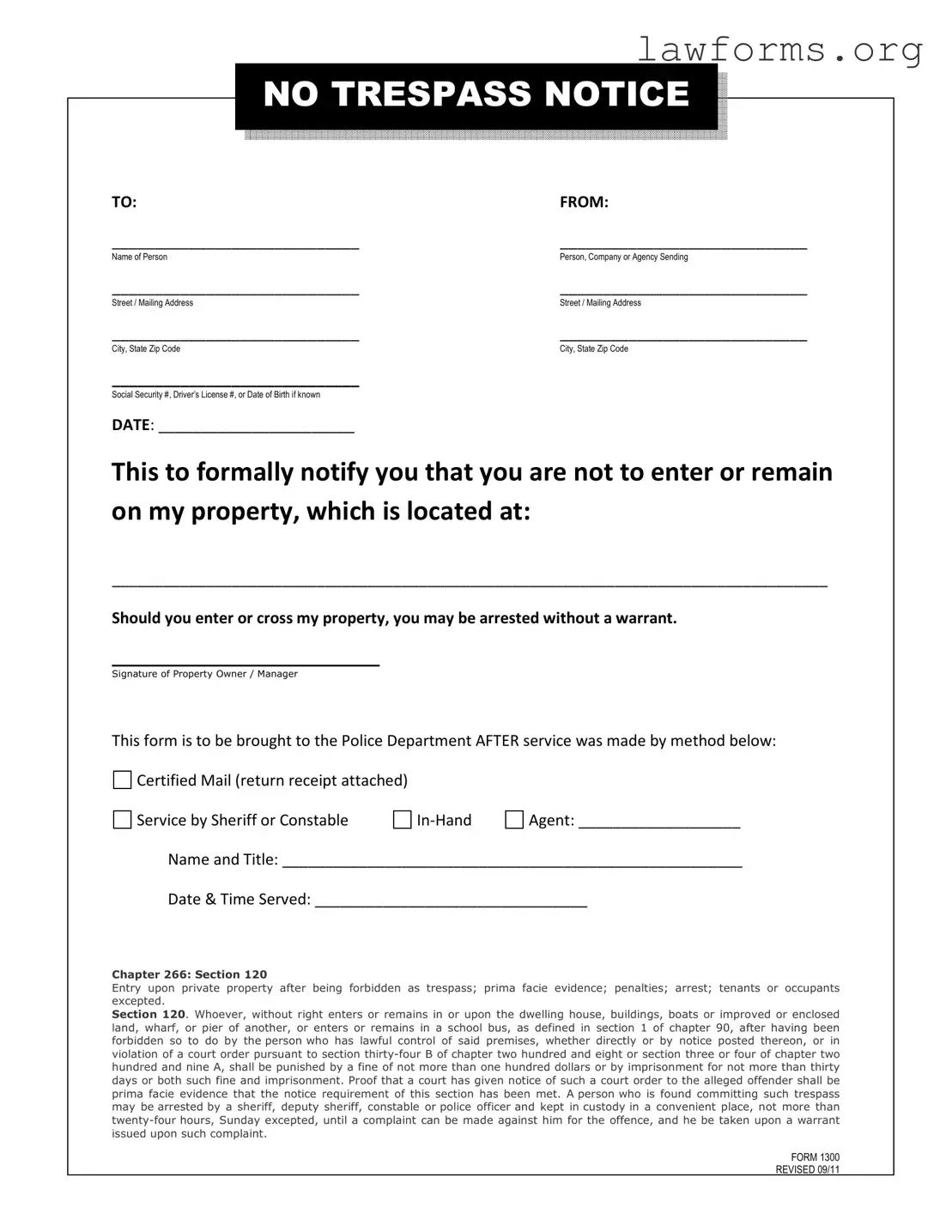Fill Out a Valid No Trespassing Letter Template
A No Trespassing Letter is a formal document that serves to inform individuals that they are not allowed to enter or remain on a specified property. This letter acts as a clear warning, outlining the property owner's rights and the potential legal consequences of trespassing. If you need to assert your property rights, consider filling out the No Trespassing Letter form by clicking the button below.
Customize Document Online

